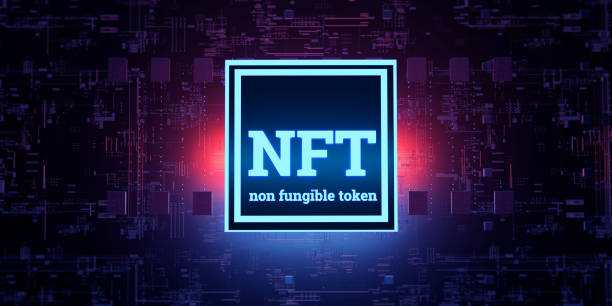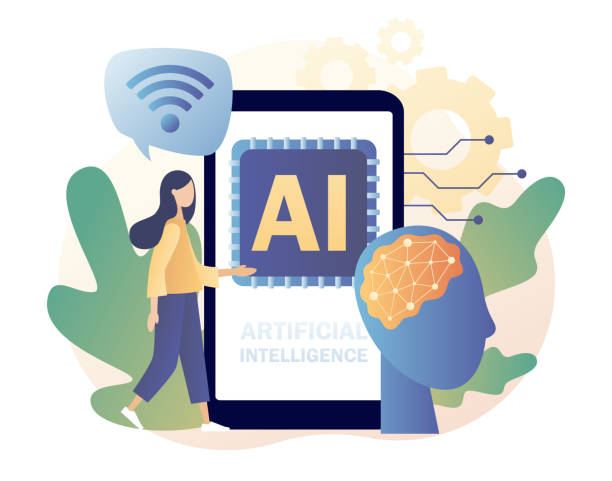What is an AI Robot and How Does It Work?
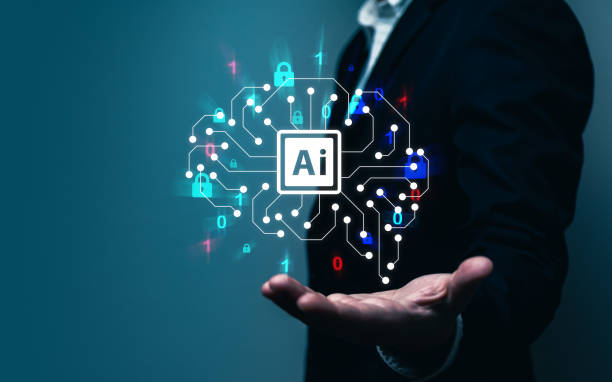
AI Robot (Artificial Intelligence Robot) is a combination of two distinct but related fields: #Artificial_Intelligence and #Robotics.
Simply put, these robots are machines that, using artificial intelligence algorithms, are capable of performing tasks that typically require human intelligence.
These tasks include learning, reasoning, problem-solving, natural language understanding, and pattern recognition.
These robots work by first collecting information through various sensors (such as cameras, microphones, touch sensors, etc.).
This information is then transmitted to a central processing system (usually a computer) where it is analyzed using artificial intelligence algorithms.
Based on this analysis, the robot makes decisions and takes actions.
These actions can include movement, speaking, manipulating objects, or even interacting with humans.
For example, an AI robot designed to assist the elderly can use a camera and face recognition algorithms to identify the elderly person, use a microphone and natural language processing to communicate with them, and use touch sensors to help them get up from the ground.
AI robots are currently used in many industries and applications, including manufacturing, healthcare, education, customer service, and even entertainment.
More information about Artificial Intelligence is available.
The most important advantage of these robots is their ability to perform repetitive and dangerous tasks without fatigue or error.
Furthermore, they can process information faster and more accurately than humans, making better decisions.
However, there are also challenges in the development and use of these robots, including ethical, security, and economic issues.
Does your company’s website create a professional and lasting first impression in the minds of potential customers? Rasaweb, with its professional corporate website design, not only reflects your brand’s credibility but also opens a path for your business growth.
✅ Create a powerful and reliable brand image
✅ Attract target customers and increase sales
⚡ Get free consultation
Types of AI Robots Based on Application

AI robots are divided into different categories based on their application.
Understanding these categories helps us better grasp their role and importance in various industries and fields.
1.
Industrial Robots These robots are used in factories and production lines to perform repetitive and heavy tasks.
They can move parts, assemble products, perform welding, and inspect product quality.
The use of industrial AI robots increases production speed and accuracy, reduces costs, and improves worker safety.
2.
Service Robots These robots are designed to provide services to humans.
They can assist nurses in hospitals, offer services to customers in hotels, serve food in restaurants, and help the elderly and disabled in homes.
These service AI robots are gradually replacing some human jobs.
3.
Medical Robots These robots are used in surgery, rehabilitation, and patient care.
They can perform complex surgeries with greater precision, assist patients with rehabilitation exercises, and continuously monitor patients’ vital signs.
These medical AI robots play a significant role in improving the quality of healthcare.
4.
Military Robots These robots are used in military operations for reconnaissance, bomb disposal, patrolling, and even combat.
Their use can prevent human casualties and reduce the risks associated with military operations.
However, the use of military AI robots has raised many ethical and legal issues.
5.
Educational Robots These robots are designed for educating children and adults.
They can explain complex concepts in simple language, assist students with homework, and provide an interactive and engaging learning environment.
Educational AI robots are gradually becoming an essential tool in modern educational systems.
These are just a few examples of the types of AI robots based on their application.
With technological advancements, we expect to see the emergence of newer types of these robots in various fields.
Main Components of an AI Robot
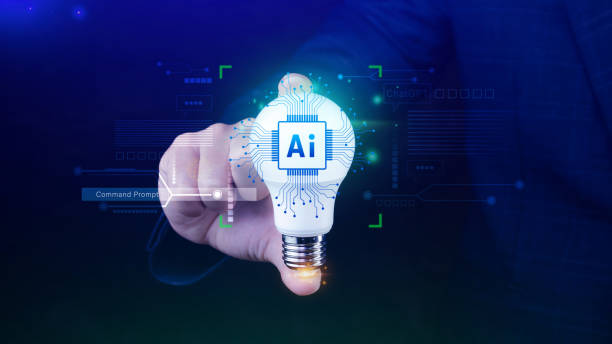
Every AI robot consists of various components that, by working together, enable it to perform its intended tasks.
Understanding these components helps us gain a better insight into how these robots function.
1.
Sensors Sensors are tools that collect information about the surrounding environment.
This information can include images, sounds, temperature, pressure, light, distance, and so on.
There are various types of sensors, including cameras, microphones, touch sensors, infrared sensors, etc.
The quality and accuracy of sensors play a crucial role in the performance of an AI robot.
2.
Processor The processor is responsible for processing the information collected by the sensors and making decisions based on AI algorithms.
Processors are usually powerful computers capable of performing complex calculations in real-time.
The speed and power of the processor play a crucial role in the speed and accuracy of the AI robot’s operation.
3.
Actuators Actuators are devices that perform actions based on decisions made by the processor.
These actions can include movement, speaking, manipulating objects, etc.
There are various types of actuators, including motors, pumps, valves, and so on.
The precision and power of actuators play a significant role in the quality of tasks performed by an AI robot.
4.
Software Software includes AI algorithms, control programs, and the user interface.
AI algorithms are responsible for learning, reasoning, and decision-making.
Control programs are responsible for coordinating between sensors, the processor, and actuators.
The user interface allows the user to interact with the AI robot.
The quality and efficiency of the software play a significant role in the overall performance of the robot.
5.
Power Supply The power supply is responsible for providing the necessary energy for all components of the AI robot to function.
The power supply can be a battery, mains electricity, or solar energy.
The capacity and stability of the power supply play a crucial role in the robot’s operating time.
These components, by working together, enable the correct and efficient operation of the AI robot.
The design and optimization of these components play a significant role in improving the robot’s performance and efficiency.
| Component | Description |
|---|---|
| Sensors | Collecting information from the environment |
| Processor | Processing information and making decisions |
| Actuators | Performing physical actions |
AI Algorithms Used in Robots

AI algorithms are the beating heart of every AI robot.
These algorithms enable robots to learn, reason, make decisions, and interact with their surroundings.
In this section, we will examine some of the most important AI algorithms used in robots.
1.
Machine Learning Machine learning is a method for training computers without being explicitly programmed.
In this method, computers learn patterns using data and make predictions and decisions based on these patterns.
Machine learning has various types, including supervised learning, unsupervised learning, and reinforcement learning.
AI robots often use machine learning to improve their performance over time.
2.
Natural Language Processing (NLP) Natural language processing enables computers to understand and generate human language.
These algorithms are essential for AI robots that interact with humans.
By using natural language processing, robots can understand voice commands, answer questions, and translate texts.
More information about Natural Language Processing is available.
3.
Computer Vision Computer vision enables computers to understand images and videos.
These algorithms are essential for AI robots that need to recognize objects, faces, and scenes.
By using computer vision, robots can navigate their surroundings, identify objects, and interact with humans.
4.
Planning Planning enables robots to design a series of actions to achieve a goal.
These algorithms are essential for AI robots that need to perform complex tasks.
By using planning, robots can find movement paths, prioritize tasks, and allocate resources efficiently.
5.
Expert Systems Expert systems are computer programs that simulate the knowledge and experience of a human expert in a specific field.
These systems can be used to solve complex problems, provide advice, and make decisions.
AI robots operating in specialized fields such as medicine and law often use expert systems.
These are just a few examples of AI algorithms used in robots.
With technological advancements, newer and more advanced algorithms have also been developed, providing new capabilities for AI robots.
Does your current corporate website present a worthy image of your brand and attract new customers?
If not, transform this challenge into an opportunity with Rasaweb’s professional corporate website design services.
✅ Significantly improves your brand’s credibility and image.
✅ Paves the way for lead generation and new customer acquisition.
⚡ For free and specialized consultation, contact Rasaweb now!
Challenges and Limitations of AI Robots
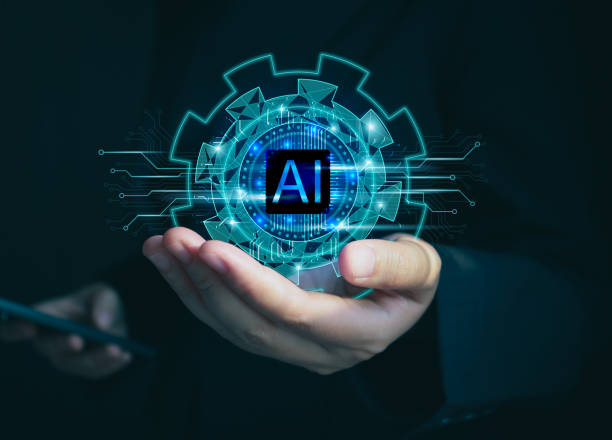
Despite significant advancements in the field of AI robots, there are still challenges and limitations that need to be overcome for these robots to fully demonstrate their potential.
1.
Cost The development and manufacturing of AI robots can be very expensive.
The cost of components, software, specialized human resources, and necessary infrastructure can be a barrier to the widespread use of these robots in some industries and fields.
2.
Complexity Designing and programming AI robots is highly complex and requires extensive knowledge and expertise.
Developers must be familiar with AI algorithms, robotics, electronics, and other related fields.
3.
Data Dependency AI algorithms require a large amount of data to learn and improve their performance.
If sufficient and high-quality data is not available, the performance of AI robots may be poor.
4.
Ethical Issues The use of AI robots raises many ethical concerns, including accountability, privacy protection, discrimination, and human labor displacement.
It is necessary to establish laws and regulations governing the use of these robots to prevent their misuse.
5.
Security AI robots may be vulnerable to cyber-attacks.
Hackers can disable robots by gaining access to their control systems, steal information, or even harm humans.
Appropriate security measures must be implemented to protect these robots from cyber-attacks.
6.
Reliability AI robots may make errors in unexpected situations or when encountering new information.
These errors can lead to financial losses, personal injury, or environmental damage.
It is necessary to design AI robots to be fault-tolerant and capable of operating reliably in various conditions.
Overcoming these challenges and limitations requires further research and development in the field of AI robots.
With technological advancements and increased public awareness, these robots are expected to play a more significant role in our lives.
The Future of AI Robots and Their Impact on Our Lives

The future of AI robots is bright and full of potential.
With continuous technological advancements, these robots are expected to play a more significant role in our lives and have profound impacts on industries, jobs, and our lifestyles.
1.
Widespread Automation AI robots are increasingly automating various tasks.
This automation can lead to increased productivity, reduced costs, and improved service quality.
However, widespread automation can also result in job losses and increased economic inequality.
It is necessary to adopt appropriate policies to manage these social and economic changes.
2.
Personalized Services AI robots can fully personalize services.
By collecting information about each individual’s preferences and needs, they can provide tailored services.
For instance, AI robots can offer personalized services in education, healthcare, entertainment, and other fields.
3.
More Natural Interaction AI robots are becoming more interactive and natural.
They can interact naturally with humans using natural language processing, computer vision, and other technologies.
This more natural interaction can lead to wider acceptance of these robots in society.
4.
Solving Complex Problems AI robots can be used to solve complex problems in various fields such as climate, healthcare, energy, and space.
By analyzing large volumes of data and identifying hidden patterns, they can provide innovative solutions to these issues.
5.
Improved Quality of Life Overall, AI robots are expected to lead to an improved quality of human life.
They can help us perform tasks faster and easier, enhance our health, protect the environment, and access more knowledge and information.
However, it is also necessary to pay attention to the potential challenges and risks arising from the development of AI robots and to adopt appropriate policies to manage this technology to prevent its misuse and to ensure its benefits are fairly shared.
Ethical Considerations in the Design and Use of AI Robots

Concurrently with rapid advancements in the field of AI robots, attention to ethical considerations in the design, development, and use of this technology is becoming increasingly important.
These ethical considerations can have profound impacts on society, the economy, and even human nature.
1.
Accountability If an AI robot makes a wrong decision or causes damage, who will be held accountable? Is it the robot’s manufacturer, programmer, user, or the robot itself? Determining accountability in these cases can be very difficult.
It is necessary to establish laws and regulations to define accountability for the actions of AI robots.
2.
Privacy Protection AI robots often have access to a lot of personal information.
This information can include data related to individuals’ health, finances, habits, and preferences.
It is necessary to implement appropriate security measures to protect this information from misuse and unauthorized access.
3.
Discrimination AI algorithms can unintentionally be discriminatory.
If the data used to train these algorithms is biased, the algorithms may also make discriminatory decisions.
It is necessary to ensure that the data used for training AI algorithms is fair and unbiased.
4.
Transparency The operation of AI robots is often very complex and inscrutable.
This lack of transparency can lead to mistrust and concern among the public.
Efforts should be made to make the performance of these robots as transparent and explainable as possible.
5.
Human Labor Displacement Widespread automation by AI robots can lead to job losses and increased economic inequality.
It is necessary to adopt appropriate policies to manage these social and economic changes to prevent harm to the human workforce.
6.
Control Who should control AI robots? Should a governmental organization, an international body, or the robot manufacturing companies themselves be responsible for controlling them? These questions require further discussion and consideration.
Addressing these ethical considerations is essential to ensure the responsible and ethical use of AI robots.
Given the rapid advancement of this technology, ethical discussions in this field must continue constantly, and appropriate laws and regulations for governing the use of these robots must be developed.
| Ethical Consideration | Description |
|---|---|
| Accountability | Determining responsibility for robot decisions |
| Privacy Protection | Protecting personal information |
| Discrimination | Preventing discriminatory decisions |
Skills Required for Working in the Field of AI Robots
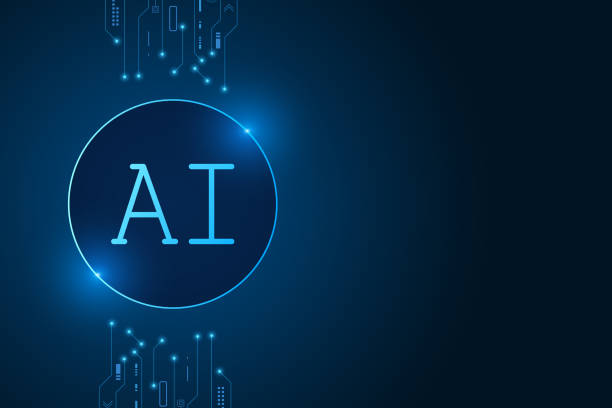
With the increasing use of AI robots, numerous job opportunities have emerged in this field.
To succeed in this area, possessing specific skills is essential.
In this section, we will examine some of the most important skills required for working in the field of AI robots.
1.
Programming Programming is one of the most important skills required for working in the field of AI robots.
Programmers are responsible for writing code to control robots, implement AI algorithms, and develop related software.
Programming languages such as Python, C++, and Java are commonly used for developing AI robots.
More information about programming is available.
2.
Mathematics Knowledge of mathematics is essential for understanding and implementing AI algorithms.
Concepts such as linear algebra, calculus, statistics, and probability are widely applied in this field.
3.
Artificial Intelligence and Machine Learning Deep knowledge in the fields of artificial intelligence and machine learning is essential for designing and developing intelligent algorithms.
Familiarity with various machine learning algorithms, neural networks, and natural language processing methods are among the required skills in this area.
4.
Robotics Knowledge of robotics is essential for understanding how robots operate, designing control systems, and selecting appropriate sensors and actuators.
Familiarity with concepts related to mechanics, electronics, and robot control are among the required skills in this area.
5.
Problem-Solving The ability to solve problems is one of the most important soft skills required for working in the field of AI robots.
Engineers and scientists in this field must be able to analyze complex problems, propose creative solutions, and implement them effectively.
6.
Teamwork Teamwork is essential for success in AI robot projects.
These projects typically require collaboration among various specialists from different fields.
The ability to communicate effectively, collaborate with others, and resolve conflicts are among the required skills in this area.
In addition to these skills, a passion for continuous learning, creativity, and innovation are also essential for success in the field of AI robots.
Given the rapid pace of technological advancement in this domain, individuals must constantly update their knowledge and skills.
Is your e-commerce site ready to attract maximum customers and boost sales? Rasaweb transforms your online business with modern and efficient e-commerce website designs.
✅ Increased speed and improved SEO
✅ Excellent user experience on mobile and desktop⚡ Get a free e-commerce website design consultation from Rasaweb!
Learning Resources for AI Robot Enthusiasts

If you are interested in the field of AI robots and want to enhance your knowledge and skills in this area, various learning resources are available to you.
In this section, we will introduce some of the most important of these resources.
1.
Online Courses Online courses are one of the best ways to learn topics related to AI robots.
Educational platforms like Coursera, Udemy, and edX offer a variety of courses in this field.
These courses are usually taught by prominent university professors and industry experts and will help you fully grasp basic and advanced concepts.
2.
Books Books are valuable resources for deep and foundational learning of topics related to AI robots.
Many books on this subject have been published in various languages, and you can choose suitable ones based on your knowledge level and interests.
3.
Scientific Articles Scientific articles are the primary source of new information and recent advancements in the field of AI robots.
By studying scientific articles, you can stay informed about the latest achievements and research in this area and update your knowledge.
Databases like IEEE Xplore and ScienceDirect provide access to scientific articles.
4.
Practical Projects Undertaking practical projects is one of the best ways to gain hands-on learning in topics related to AI robots.
By doing practical projects, you can turn your theoretical knowledge into practice and enhance your problem-solving skills in real-world scenarios.
You can undertake various projects using robotic kits, simulation software, and available data.
5.
Online Forums and Groups Joining online forums and groups can help you connect with other AI robot enthusiasts, ask your questions, benefit from others’ experiences, and participate in discussions and exchanges of ideas.
Platforms like Reddit and Stack Overflow host numerous online forums and groups related to AI robots.
6.
Robotics Competitions Participating in robotics competitions can be an excellent opportunity to test your knowledge and skills in the field of AI robots.
These competitions usually present various challenges in areas such as robot design, programming, and control, helping you improve your skills in a competitive environment.
By utilizing these learning resources and with effort and perseverance, you can enhance your knowledge and skills in the field of AI robots and become an expert in this domain.
Review of Several Successful Examples of AI Robots in the Real World

To better understand the applications and potential of AI robots, this section reviews several successful examples of these robots in the real world.
1.
Amazon Robotics Amazon uses thousands of AI robots in its warehouses to move goods.
These robots, using advanced algorithms, automatically find their way in the warehouse and transport goods to the packaging area.
The use of these robots has increased speed and accuracy in the warehousing process.
2.
da Vinci Surgical System The da Vinci Surgical System is a robotic surgical system that allows surgeons to perform complex operations with greater precision and dexterity.
This robot provides the surgeon with a better view using 3D cameras and small surgical instruments, enabling more precise movements.
3.
Tesla Autopilot Self-Driving Cars Tesla’s self-driving cars use AI robots for autonomous driving.
These vehicles perceive their surroundings using various sensors such as cameras, radar, and lidar, and determine their path using advanced algorithms.
Tesla’s self-driving cars can automatically drive on highways, park, and navigate obstacles.
4.
Chatbots Chatbots are computer programs that can interact naturally with humans.
These robots are used in customer service, technical support, and marketing.
Chatbots can answer user questions, resolve their issues, and provide necessary information.
5.
Agricultural Robots Agricultural robots are used to perform various tasks on farms.
These robots can plant seeds, eliminate weeds, harvest crops, and identify pests.
The use of agricultural robots can increase productivity and reduce costs in the agricultural industry.
These are just a few examples of successful applications of AI robots in the real world.
With technological advancements, we expect to see more and more diverse applications of these robots in various fields.
Frequently Asked Questions
| Row | Question | Answer |
|---|---|---|
| 1 | What is an AI robot? | An AI robot is a machine capable of understanding, reasoning, learning, and problem-solving, and can perform complex tasks with relative autonomy. |
| 2 | What are the main applications of AI robots? | Main applications include industrial manufacturing, customer services (chatbots), medicine and surgery, autonomous transportation, space exploration, and military affairs. |
| 3 | What is the main difference between an AI robot and a conventional robot? | A conventional robot only follows programmed instructions, whereas an AI robot can learn from data, make decisions, and adapt itself to new environments. |
| 4 | How do AI robots learn? | They learn through machine learning algorithms (such as deep learning, reinforcement learning) and by processing vast amounts of data, identifying patterns, and improving their performance. |
| 5 | Can AI robots have emotions? | Currently, AI robots do not possess genuine human-like emotions. They can mimic or detect emotions, but they do not understand or experience them. |
| 6 | What are the current limitations of AI robots? | Limitations include the need for large amounts of data, inability to grasp abstract concepts, lack of true creativity, ethical issues, and challenges of generalization in new environments. |
| 7 | What is the role of AI in the development of humanoid robots? | AI helps humanoid robots walk, maintain balance, understand their surroundings, interact with humans, and perform complex tasks. |
| 8 | How is the future of AI robots predicted? | It is predicted that AI robots will become smarter, more autonomous, and capable of performing more complex tasks in daily life and industry, with increased interaction with humans. |
| 9 | Can AI robots replace all human jobs? | It is unlikely that all human jobs will be replaced. Robots will take over many repetitive and dangerous tasks, but jobs requiring creativity, empathy, and ethical judgment will remain. |
| 10 | What ethical and social challenges arise with the proliferation of AI robots? | Challenges include issues related to privacy, data security, ethical decision-making by robots, impact on employment, and accountability in case of errors. |
And other advertising services from Rasa Web Advertising Agency
- Smart Conversion Rate Optimization: A dedicated service for growth in customer acquisition based on precise audience targeting.
- Smart Advertorial: An innovative service for increasing campaign management through marketing automation.
- Smart Digital Branding: Designed for businesses seeking digital branding through intelligent data analysis.
- Smart Social Media: A creative platform for improving sales growth with precise audience targeting.
- Smart Custom Software: An effective tool for increasing sales with the help of user experience customization.
And over a hundred other services in the field of internet advertising, advertising consultation, and organizational solutions
Internet Advertising | Advertising Strategy | Advertorial
References
AI Robots: A Comprehensive Guide
Applications of Artificial Intelligence in Daily Life
Latest Achievements in Artificial Intelligence
Technology Section: Artificial Intelligence and the Future
? With Rasaweb Afarin, your business takes flight in the digital world! We offer innovative and results-oriented solutions for your growth, including responsive website design, SEO, and content marketing.
📍 Tehran, Mirdamad Street, next to Bank Markazi, Kazeroun Jonoubi Alley, Ramin Alley, No. 6

